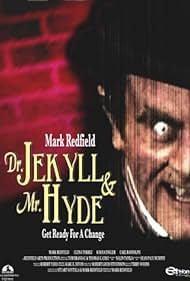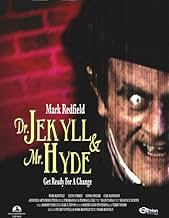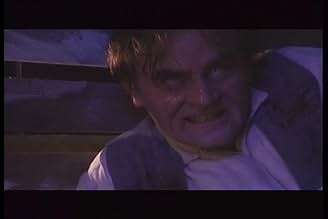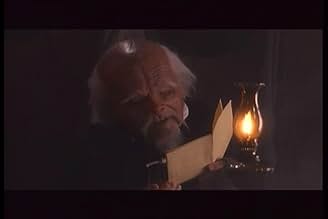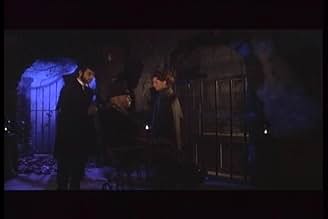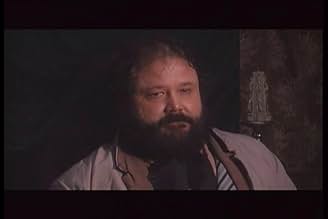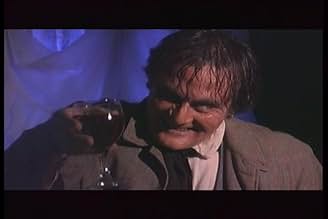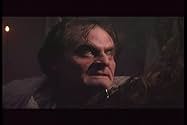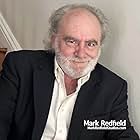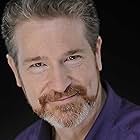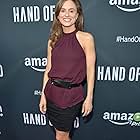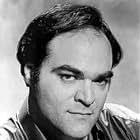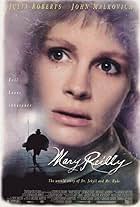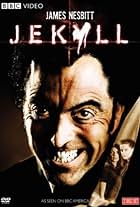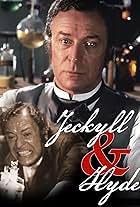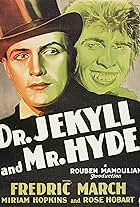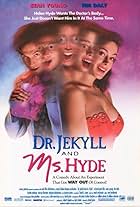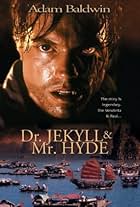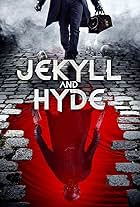Dr. Henry Jekyll experiments with scientific means of revealing the hidden, dark side of man and releases a murderer from within himself.Dr. Henry Jekyll experiments with scientific means of revealing the hidden, dark side of man and releases a murderer from within himself.Dr. Henry Jekyll experiments with scientific means of revealing the hidden, dark side of man and releases a murderer from within himself.
- Awards
- 3 wins & 2 nominations
Ellie Torrez
- Claire Caine
- (as Elena Torrez)
- Director
- Writers
- All cast & crew
- Production, box office & more at IMDbPro
Storyline
Did you know
- ConnectionsFeatured in No Stopping the Stover (2016)
Featured review
Although I had heard good things about this shot-on-video adaptation of the Robert Louis Stevenson horror classic, the fact that it was the most recent version I've watched so far, that it was maligned cheapo label Alpha which had released it on DVD and that I had seen Giorgio Albertazzi's superlative TV mini-series JEKYLL (1969) fairly recently, made me postpone this viewing past its Halloween Challenge due date!
As it happens, while it may not rank anywhere near the top of the pile in JEKYLL & HYDE movies, it is lively, engaging and innovative enough to earn a respectable placement in that pantheon. Practically a one-man labor of love for writer-producer-designer-director-leading man Mark Redfield, his excellent portrayal of the two facets of the good doctor (but especially his despicable Hyde incarnation) is the film's major asset; also putting in good work is the lovely Elena Torrez as Hyde's prize streetwalker, Robert Leembruggen as Torrez's dethroned pimp and R. Scott Thompson as Jekyll's nemesis, Mordecai Carew. The sets are cleverly effective in a cheaply naïve sort of way but the inherently drab look of DV shooting and the obvious theatrical origins of the whole production work against the film's overall appeal.
Rather than making unwieldy comparisons to other superior film versions of the story, it would be more fruitful to dwell on what this film took from them and how it differs from the norm: for example, the setting is moved forward a little to after the Ripper murders like EDGE OF SANITY (1989); Jekyll keeps portraits of his ancestors in his living room (two of them being none other than John Barrymore and Fredric March!); the Hyde make-up here is more akin to Spencer Tracy's "less is more" approach than the overtly simian look of March's Hyde; like Jean-Louis Barrault in Jean Renoir's LE TESTAMENT DU DOCTEUR CORDELIER (1959) and Giorgio Albertazzi's aforementioned Italian TV version, Hyde here dies by his own hand (strangulation) rather than being shot by the police; Jekyll narrates the progress of his experiments into a dictaphone like in the Renoir film, as well as by Udo Kier in Walerian Borowoczyk's DOCTEUR JEKYLL ET LES FEMMES (1981), etc.
The fanciful liberties taken with the original text are more of a hit-or-miss affair, however: Hyde turns into Jekyll in front of an insignificant new intern rather than his skeptical rival Dr. Lanyon; Jekyll's fiancée jumps to her death off a balcony when Hyde takes over Jekyll and, as a result, the latter stops calling at her mansion; Jekyll indulges in some unexplained dealings with body snatchers(!) for his experiments; Hyde loses a finger when, in a trigger-happy mood, he despatches Leembruggen; this being set around the turn-of-the-century, Jekyll takes the time to record the outcome of his experiments on film courtesy of a cinematographic device purchased directly from the Lumiere brothers!; a bumbling Scotland Yard Inspector (who even namedrops Arthur Conan Doyle at one stage) aids Jekyll's attorney, Mr. Utterson, in investigating the disappearance of Jekyll and cornering Hyde in his hideout; an eccentric Chinaman is Hyde's landlord in his Soho abode, etc.
P.S. Redfield has just completed THE DEATH OF POE and is, apparently, in the pre-production stages of THE CRIMES OF SHERLOCK HOLMES, THE MADNESS OF FRANKENSTEIN and THE TELL-TALE HEART...
As it happens, while it may not rank anywhere near the top of the pile in JEKYLL & HYDE movies, it is lively, engaging and innovative enough to earn a respectable placement in that pantheon. Practically a one-man labor of love for writer-producer-designer-director-leading man Mark Redfield, his excellent portrayal of the two facets of the good doctor (but especially his despicable Hyde incarnation) is the film's major asset; also putting in good work is the lovely Elena Torrez as Hyde's prize streetwalker, Robert Leembruggen as Torrez's dethroned pimp and R. Scott Thompson as Jekyll's nemesis, Mordecai Carew. The sets are cleverly effective in a cheaply naïve sort of way but the inherently drab look of DV shooting and the obvious theatrical origins of the whole production work against the film's overall appeal.
Rather than making unwieldy comparisons to other superior film versions of the story, it would be more fruitful to dwell on what this film took from them and how it differs from the norm: for example, the setting is moved forward a little to after the Ripper murders like EDGE OF SANITY (1989); Jekyll keeps portraits of his ancestors in his living room (two of them being none other than John Barrymore and Fredric March!); the Hyde make-up here is more akin to Spencer Tracy's "less is more" approach than the overtly simian look of March's Hyde; like Jean-Louis Barrault in Jean Renoir's LE TESTAMENT DU DOCTEUR CORDELIER (1959) and Giorgio Albertazzi's aforementioned Italian TV version, Hyde here dies by his own hand (strangulation) rather than being shot by the police; Jekyll narrates the progress of his experiments into a dictaphone like in the Renoir film, as well as by Udo Kier in Walerian Borowoczyk's DOCTEUR JEKYLL ET LES FEMMES (1981), etc.
The fanciful liberties taken with the original text are more of a hit-or-miss affair, however: Hyde turns into Jekyll in front of an insignificant new intern rather than his skeptical rival Dr. Lanyon; Jekyll's fiancée jumps to her death off a balcony when Hyde takes over Jekyll and, as a result, the latter stops calling at her mansion; Jekyll indulges in some unexplained dealings with body snatchers(!) for his experiments; Hyde loses a finger when, in a trigger-happy mood, he despatches Leembruggen; this being set around the turn-of-the-century, Jekyll takes the time to record the outcome of his experiments on film courtesy of a cinematographic device purchased directly from the Lumiere brothers!; a bumbling Scotland Yard Inspector (who even namedrops Arthur Conan Doyle at one stage) aids Jekyll's attorney, Mr. Utterson, in investigating the disappearance of Jekyll and cornering Hyde in his hideout; an eccentric Chinaman is Hyde's landlord in his Soho abode, etc.
P.S. Redfield has just completed THE DEATH OF POE and is, apparently, in the pre-production stages of THE CRIMES OF SHERLOCK HOLMES, THE MADNESS OF FRANKENSTEIN and THE TELL-TALE HEART...
- Bunuel1976
- Nov 20, 2007
- Permalink
Details
Contribute to this page
Suggest an edit or add missing content
